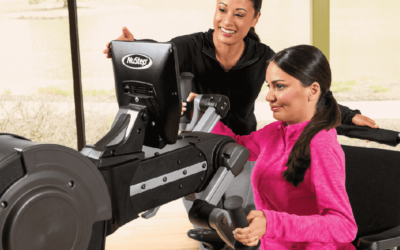Protect Your Knees. Knee pain is, well, a pain. It slows you down and keeps you on the sidelines of life. And, while...
Exercise Safety: Tips for Beating the Heat
Exercising in the Heat. The summer heat can affect our bodies much more than we think when we exercise in hot weather....
How Should I Exercise If I’m Short On Time?
Exercising In A Pinch. Everyone faces time constraints, and unfortunately, our fitness routines tend to suffer. It...
What is an Upper Body Ergometer?
Defining Upper Body Ergometers. An upper body ergometer is a piece of exercise equipment that, as the name suggests,...
Taking Steps for Better Sleep
The Exercise/Sleep Connection. For many exercisers, one of the biggest payoffs of increasing their physical activity...
What is Whole-Person Wellness and Why Is It Important?
Defining Whole-Person Wellness. On the face of it, the term whole-person wellness might seem like a fad from the 60’s...
Fitness and Wellness: Do They Mean the Same Thing?
The Difference Between Fitness and Wellness. In recent years, “wellness” has become something of a marketing term de...
Fall Prevention: Can NuStep Exercise Help?
Minimizing Fall Risks with Exercise There’s no side-stepping this cold, hard fact for older adults. As we age, the...
Boosting Your Immune System For Winter
Protect Your Health. This winter, even more so than years past, boosting your immune system to protect your health...
Reach the Summit of Mount Everest…on a NuStep Cross Trainer
NuStepping To Mount Everest. Are you looking for a new way to challenge yourself and achieve new goals with your...
Can You Do HIIT on a Recumbent Cross Trainer?
Can You Do High Intensity Interval Training on a Recumbent Cross Trainer? The short answer is yes; you CAN do HIIT...
I Have Limited Mobility. Can I Exercise on a NuStep Cross Trainer?
NuStep's for Limited Mobility If you are living with limited mobility due to an injury, disability, chronic health...












